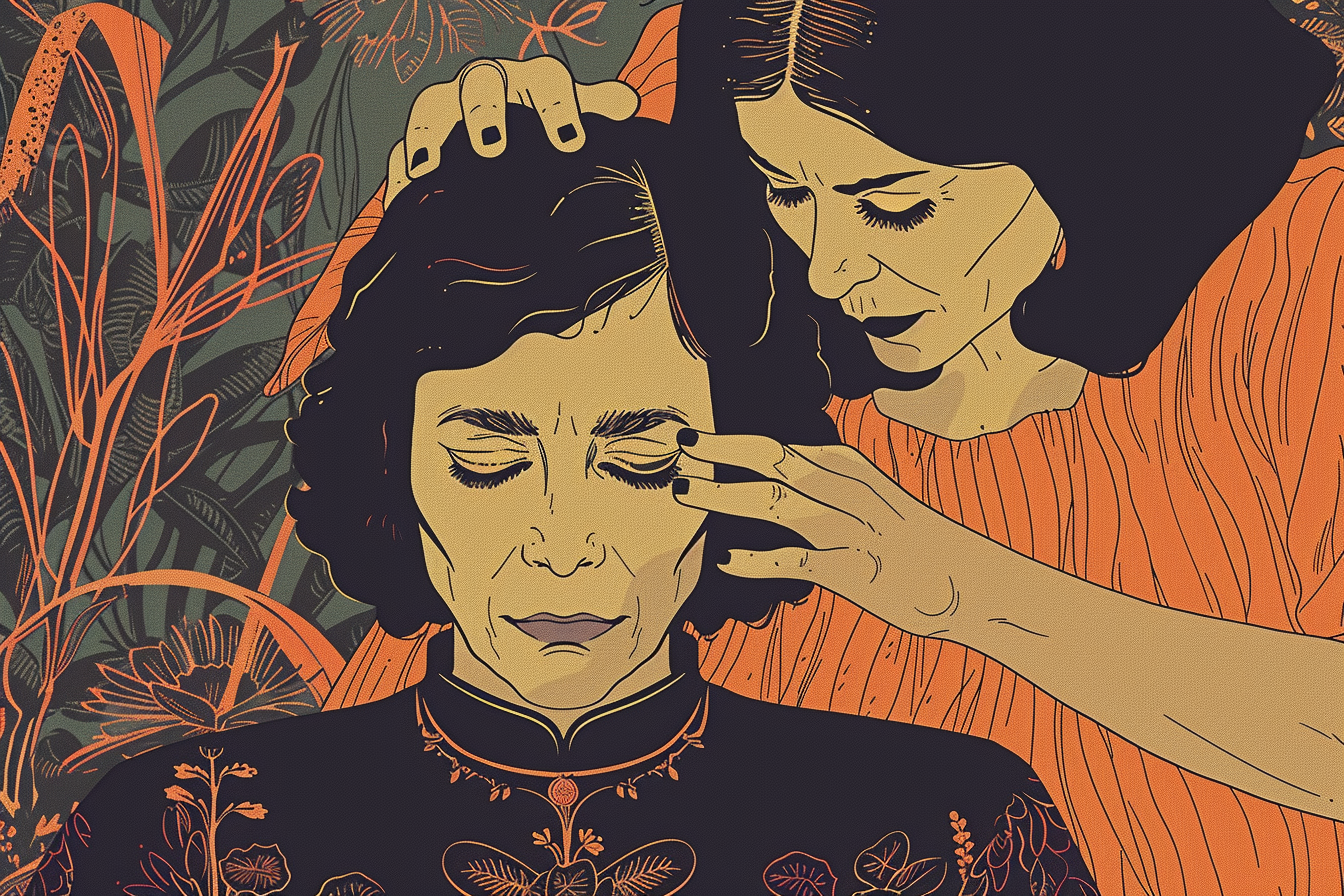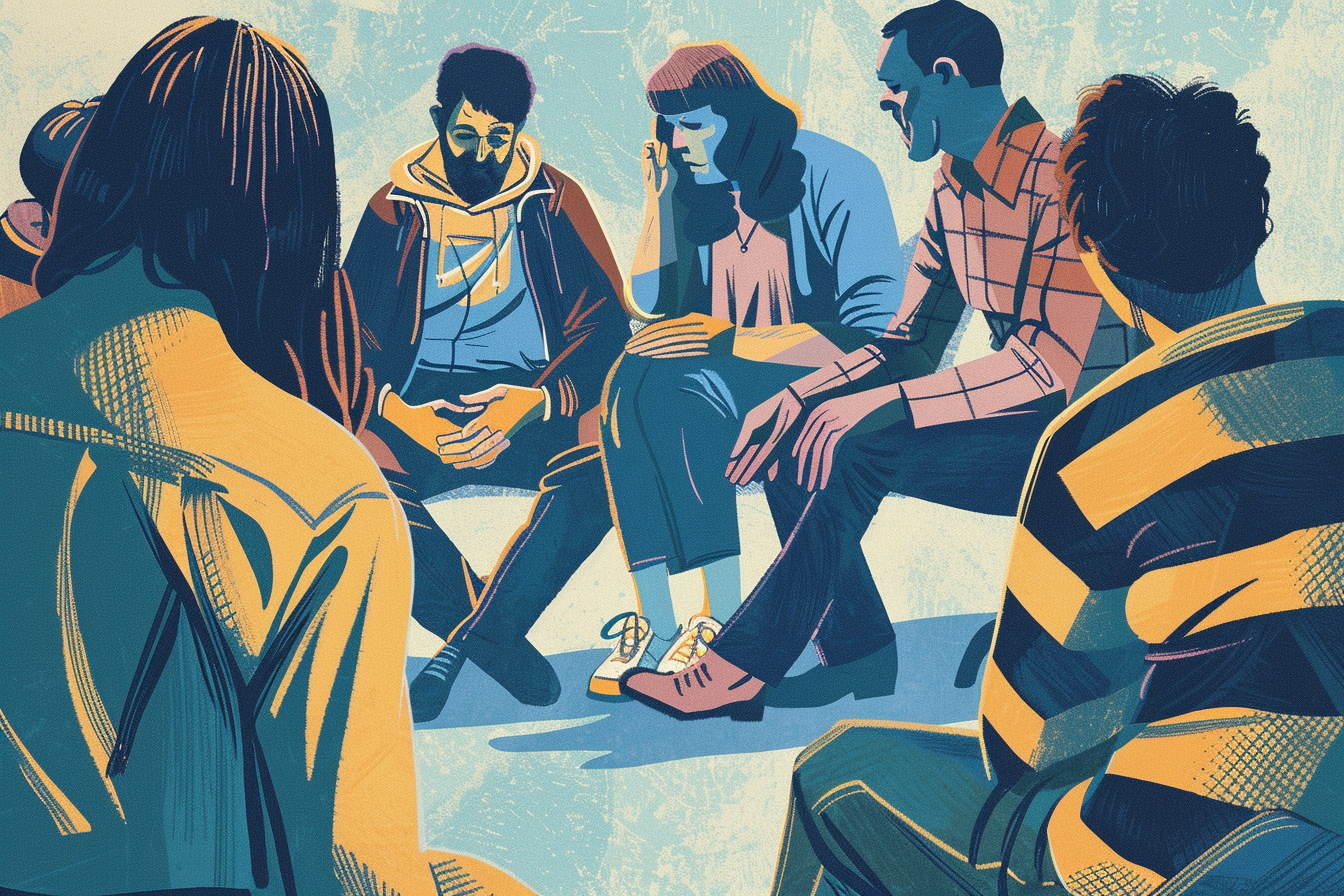The Grief of Suicide: Understanding and Healing After Loss Through Mediumship

The grief of suicide is a labyrinth of unanswered questions and unresolved pain. This article offers you a compassionate roadmap through the maze, with practical advice on coping strategies, understanding your emotions, and finding a sense of peace amidst the turmoil. Learn how others have walked this path, how professional insights can aid your healing, and how honoring memory can be a step towards recovery.
Key Takeaways
-
Grieving a suicide loss involves complex emotions like guilt, anger, and confusion, often intensified by stigma and unanswered questions, which can be addressed through various forms of support and coping strategies.
-
Providing emotional, practical, or community support to those grieving suicide loss is crucial in helping them navigate the aftermath, and participation in support groups or advocacy can be therapeutic.
-
Mediumship can play a role in the grieving process by offering solace and closure, but it also raises ethical considerations and skepticism, underlining the need for ethical practices by psychic mediums.
Unpacking the Layers of Grief After a Suicide

Grief after a suicide is a complex and heart-wrenching experience. Unlike other forms of loss, it often involves grappling with feelings of responsibility, a sense of abandonment by the deceased, and the direct traumatic aspects. Survivors frequently experience a complex mixture of guilt, anger, blame, confusion, and even hatred, which can be more intense than the feelings provoked by other forms of grief.
Unique challenges often confront survivors in the aftermath of suicide. They may feel they can’t go on or wonder why the suicide happened, along with the stigma and shame associated with the loss that can obstruct the normal grieving process. The journey to understanding and healing after a loved one’s suicide is not linear, but rather a winding path with highs and lows, filled with painful emotions and difficult emotions.
The Shockwave of Initial Emotions
The initial wave of emotions after a suicide loss can leave survivors in a state of shock, characterized by disbelief and emotional numbness. This initial emotional shock can be followed by secondary reactions such as nightmares and flashbacks, adding to the intensity of the grieving process.
In addition to the emotional numbness, survivors often experience difficulty concentrating and may withdraw socially, losing interest in previously enjoyed activities as they grapple with the aftermath of a loved one’s suicide. While these intense reactions, part of the traumatic grief, can be overwhelming, bear in mind there’s no correct or incorrect method to grieve. Each individual’s grieving process is unique, hence the importance of permitting oneself to experience and verbalize these complex emotions.
The Tangle of Guilt and Responsibility

Guilt and responsibility often entangle suicide survivors in a common struggle following a suicide death. Survivors often find themselves burdened with self-blame, constantly questioning what they could have done differently. This guilt may even extend to relief that their loved one’s suffering has ended with the suicide.
Parents, in particular, may bear an added burden of guilt after the suicide of a child, haunted by thoughts of failing in their role as a protector or in their child’s upbringing. This painful guilt can be somewhat alleviated through discussions with a medium, which can provide clarity on the true intentions of the departed soul, thus aiding in the journey towards healing from the unresolved grief. Understanding that there is no right or wrong way to grieve can also be helpful in this process.
The Struggle with Unanswered Questions

The struggle with unanswered questions is among the most haunting aspects of suicide loss. ‘Why did they do it?’ is a question that often haunts those left behind. A suicide note, if present, may not offer clear answers due to the individual’s skewed perception and overwhelming pain at the time of their death.
Survivors commonly grapple with these unanswered questions, feelings of guilt, and a tendency to overestimate their own responsibility in the events leading to the suicide. Through a psychic mediumship reading session, survivors have an opportunity to ask these pressing questions and receive answers from the spirit of the deceased. This connection can provide some comfort, clarity, and a step towards resolving the grief.
Supporting Suicide Loss Survivors

In their healing journey, support for suicide loss survivors is of utmost importance. Friends and family members play a critical role in providing this support by being present, offering a listening ear, and showing empathy without judgment. Offering comfort and empathy are the most effective ways for loved ones to support those grieving a suicide loss.
The support from loved ones can offer invaluable relief, allowing survivors to open up without fear. This can provide hope and decrease the sense of isolation that often accompanies the grieving process. But it’s not just about emotional support; booking a reading session with a trusted psychic medium can help survivors stay connected to the spirit of their departed loved ones and gain clarity and bring closure to the situation.
Offering Emotional Support
Suicide loss survivors greatly need emotional support. This support can take many forms, such as using the name of the person who has died when speaking with survivors. This simple act acknowledges the individual and can make discussing their loss more manageable.
Providing support and showing empathy during significant dates, like holidays and anniversaries, recognizes the intensification of the loved one’s absence and can be deeply meaningful. Some ways to support someone during these times include:
-
Sending a thoughtful card or message
-
Offering to spend time together or participate in a special activity
-
Acknowledging their feelings and validating their grief
-
Creating a safe space for them to share their memories and emotions
Encouraging survivors to share their feelings about their loss when they are ready offers them comfort and a sense of control over how they deal with their grief.
This emotional support, combined with the understanding and shared experience of support groups, can aid the healing process for those dealing with the traumatic grief of suicide loss.
Practical Assistance in Difficult Times
For those dealing with suicide bereavement, practical assistance can serve as a lifeline. Significant dates like birthday, holidays and anniversaries can exacerbate emotions of fear, grief, and shame for survivors. In these moments, creating a safety plan can offer a structured method to cope during personal crises, particularly for those suffering from intense episodes of depression or suicidal thoughts.
Community Engagement and Recovery Programs
Community programs, such as Roots of Hope in Canada, involve suicide loss survivors in activities that promote life and prevent suicide, demonstrating a model for local engagement that aids in their journey of recovery. These practical measures, combined with the appropriate support from loved ones, can make a significant difference in the lives of those grappling with suicide loss.
Connecting to Community Resources
For suicide loss survivors, connecting with community resources can provide extra comfort and a sense of community. Joining support groups, for instance, can significantly help individuals by providing them with understanding and a sense of shared experience.
Events like the International Survivors of Suicide Loss Day also offer an opportunity for survivors to find community and comfort. Organizations like the American Foundation for Suicide Prevention offer publicly accessible directories of support groups, which can be valuable resources for those seeking to connect with others and engage in advocacy work.
These connections can be a significant source of hope and healing for survivors of suicide loss.
Honoring the Deceased with Mediumship on Special Occasions
Connecting with a loved one through a mediumship session on birthdays or anniversaries can be a profound way to honor their memory. It's a clear affirmation that the bond with the deceased transcends physical separation, providing comfort to those left behind. For many, these sessions can be akin to giving a gift to the departed soul and to the ones in mourning, offering them peace and healing. This practice can be particularly meaningful on significant dates, serving as a ritual of remembrance and a step towards healing for both the living and the spiritual presence of the loved one.
The Journey Through Complicated Grief

Complicated grief is a condition characterized by unresolved sorrow and pain that persist over time, hindering individuals, such as a bereaved person, from resuming their life and relationships. This kind of grief is more likely to occur after a sudden or violent death, such as homicide or suicide, with symptoms including intense yearning, intrusive thoughts about the deceased, and problems accepting the death.
Around 10% to 20% of bereaved individuals develop complicated grief. If left unaddressed, this form of grief can lead to:
-
impairments in daily life
-
depressive symptoms
-
feelings of hopelessness
-
persist indefinitely without treatment
It’s a heavy burden to bear, but with the right support and coping strategies, survivors can navigate their way through this difficult journey.
Recognizing the Signs of Complicated Grief
Recognizing the symptoms of complicated grief paves the way to seeking help. It can manifest as complex feelings, such as:
-
Recurrent and intense pangs of grief
-
Avoidance of reminders of the loss
-
A sense of emptiness
-
Feelings of anger
-
Feelings of guilt
-
A diminished sense of self
If you are experiencing these symptoms, it is important to reach out for support.
The Intersection of Complicated Grief and PTSD
Additionally, post-traumatic stress disorder symptoms, such as flashbacks, nightmares, or avoidance behaviors, may arise after a suicide loss, indicating the development of complicated grief. If these symptoms persist, it is crucial to seek professional help as complicated grief can lead to major depression, psychological trauma, or post-traumatic stress disorder, impairing daily functioning.
Impact on Physical and Mental Health
Unresolved grief can manifest in physical symptoms, leading to somatic disorders such as sleep disturbances and changes in appetite. Depression is a common outcome for those experiencing unresolved grief after a suicide loss, impacting various aspects of life. Additionally, post-traumatic stress disorder (PTSD) rates are higher among those who have lost someone to suicide, with symptoms like flashbacks and severe anxiety. Alongside depression and PTSD, unresolved grief can lead to prolonged suffering and a detrimental impact on the quality of life.
Recognizing the physical and mental impact of unresolved grief is key to seeking suitable support and starting the healing journey.
Pathways to Healing from Complicated Grief
A variety of treatment options are involved in healing from complicated grief. For survivors facing major depressive disorder (MDD) or PTSD after a suicide loss, treatment options of medications and/or psychotherapy are recommended. While deciding on treatment, clinicians should assess factors such as:
-
the severity of symptoms
-
comorbidities
-
past history
-
treatment outcomes
-
safety
-
patient preferences
Grief Counseling and Support Services
Therapists, grief counselors, and mental health professionals provide essential support for those grappling with the aftermath of suicide loss, helping them through the process of grief counseling. A structured safety plan for moments of crisis can aid survivors in managing moments of acute depression or suicidal thoughts.
Benefits of Specialized Grief Counseling
Participation in specialized grief counseling has shown to result in improvements in grief severity, depression symptoms, and overall quality of life for individuals experiencing complicated grief. It’s essential to remember that help is available and that it’s okay to reach out and seek it.
Coping Strategies for Suicide Bereavement
Integral to the healing process are coping strategies for suicide bereavement. Dealing with the loss of a loved one to suicide requires a combination of self-care practices, creative expression, and seeking solace in spirituality. In treatment, it’s important to include education, psychotherapy, and pharmacotherapy. The focus should be on addressing depression, guilt, and trauma.
Investigating Therapeutic Treatments Involving Psychoactive Substances
This form of treatment includes the use of substances like psilocybin mushrooms, LSD, MDMA and ayahuasca under professional supervision. These substances are being researched for their potential to treat a variety of mental health conditions, including the profound grief that can follow a suicide loss.
Exploring Therapeutic and Supportive Strategies for Suicide Bereavement
In treatment, it’s important to include education, psychotherapy, pharmacotherapy, and when appropriate, supervised psychoactive therapy. The focus should be on addressing depression, guilt, and trauma.
Psychedelic therapy aims to create a controlled, therapeutic environment where individuals can explore their emotions and thoughts with the guidance of a trained professional. This can lead to profound insights and emotional breakthroughs that may offer relief from the intense emotional pain associated with bereavement.
Coping Strategies for Navigating Suicide Bereavement
To manage the impact of a loved one’s suicide, adopting healthy coping strategies is of great importance. Here are some strategies to consider:
-
Maintain physical health through nutrition, exercise, and personal hygiene.
-
Engage in expressive writing, such as journaling feelings or composing a letter to the deceased, to provide a private space for dealing with unsaid thoughts and emotions.
-
Seek the help of a medium who can use automatic writing to bring through direct messages from the departed loved one.
-
Consider the potential benefits of psychedelic therapy under professional guidance, exploring substances such as psilocybin, LSD, MDMA or ayahuasca to navigate the complex emotions and find peace.
These strategies can help you cope with the bereavement process.
Self-Care Practices
For survivors of suicide loss, it’s critical to establish self-care routines in their own life. These practices can instill a sense of normalcy and hope during the grieving process, choosing practices that feel personally appropriate. Recognizing personal limitations and respecting one’s own pace in the grieving process is also essential, and there should be no pressure to talk or reconcile feelings until ready.
Emotions can be expressed through talking, writing, or creative activities, and survivors should engage in practices like journaling, yoga, or meditation to stay present with these feelings. Allowing oneself to experience positive emotions, engage in enjoyable activities, and seek support from friends and family on significant days can aid in emotional well-being and provide a respite from grief.
Creative Expression and Memorialization

As a coping strategy for suicide bereavement, creative expression can be powerful. Some ways to express your grief and emotions include:
-
Writing about your feelings
-
Composing a letter to the deceased
-
Creating artwork or crafts
-
Engaging in music or dance
-
Participating in a support group or therapy
These activities provide a cathartic way for survivors to articulate and process their grief.
Memorial acts such as creating a memento box, preparing favorite dishes of the deceased, or curating a video library can offer therapeutic comfort and preserve the memory of the loved one. Engaging in visual arts, like drawing or painting, can be a powerful means for survivors to express grief and create a lasting legacy for those they have lost.
Seeking Solace in Spirituality

Particularly in the context of mental illness, mediumship and spirituality can make a significant contribution to the healing process. For some individuals, the belief that death is a transition rather than a final end can provide solace, supported by practices such as mediumship.
During a psychic mediumship reading session, individuals seek to communicate with their deceased loved one. A key objective for some seeking mediumship is to confirm that their deceased loved one is no longer in pain and has crossed over, suggesting a form of afterlife or spirit continuation. This connection can provide peace and closure for both the departed soul and the family and friends left behind.
Transforming Pain into Purpose
Even amidst the unbearable pain of suicide loss, transformation of pain into purpose is possible. Creating meaningful legacies and participating in activities that honor the memory of their loved ones can help grieving individuals achieve this transformation. Engaging in these meaningful activities can:
-
Bring comfort
-
Foster connections with others
-
Aid in coming to terms with the loss
-
Ease stress
Advocacy and Awareness
Survivors can find a sense of purpose and aid their healing process by engaging in advocacy and awareness initiatives for suicide prevention. Events like the International Survivors of Suicide Loss Day, supported by the American Foundation for Suicide Prevention, can be particularly helpful, offering a platform for survivors to share their stories, find community, and contribute to the larger conversation about suicide prevention.
Building a Legacy
Another powerful method to turn pain into purpose is by building a legacy. Survivors can create memorials or monuments as a communal way to express grief and remembrance. These memorials can be interactive, allowing visitors to engage and create a shared memory of the deceased.
Families can also honor their loved one by donating to charities or causes they were passionate about, creating an enduring legacy of giving. Resources such as a Healing Guide can aid in commemorating a loved one’s death, especially when lost to a loved one’s suicide, and assist others in their journey through grief.
Community initiatives like Roots of Hope strive to build a legacy by implementing specialized supports and training focused on collaboration, cultural appropriateness, and innovation in suicide prevention.
Understanding the Role of Mediumship in Grieving
In the grieving process, mediumship can hold a significant role. It involves individuals who claim to connect with the spirit world to relay messages from deceased individuals to the living. During a psychic mediumship reading session, individuals seek to communicate with their deceased loved one.
A key objective for some seeking mediumship is to confirm that their deceased loved one is no longer in pain and has crossed over, suggesting a form of afterlife or spirit continuation. The overarching aim of mediumship in grieving is to achieve peace and closure for both the departed soul and the family and friends left behind.
Ethical Considerations and Skepticism
Mediumship can offer comfort, but its nature also sparks skepticism and ethical debates. Ethical psychics approach mediumship with practices aimed at ensuring the highest good for their clients, including:
-
The appropriate delivery of sensitive information
-
Seeking help from guides and angels
-
Striving to deliver challenging information in a healing manner
-
Often directing clients towards medical or professional advice when necessary
To prevent exploitation and maintain professionalism, ethical psychics charge for their time without leveraging clients’ emotions for additional fees and are willing to withhold distressing details if the client prefers.
Despite the skepticism, mediumship readings can be a source of comfort for many, providing a bridge to connect with their loved ones and find solace in their loss.
Personal Accounts and Experiences with Mediumship
The potential for healing and solace in the grieving process is underscored by personal accounts of mediumship experiences. For instance, Laura Saltman found solace in mediumship following her father’s suicide, which aided her healing and led her to become a psychic medium herself.
During mediumship reading sessions, bereaved individuals often attend with personal mementos of their deceased loved ones, seeking a sense of connection through the medium’s abilities. These personal accounts and experiences highlight the potential role of mediumship in providing comfort, clarity, and closure in the grieving process.
The Impact of Mediumship on Grieving Families: A Case Study with Theresa Caputo
One of the most well-known figures in the world of mediumship is Theresa Caputo, also known as the Long Island Medium. Her television show has brought the concept of communicating with the departed into the living rooms of many, offering a sense of hope and closure to grieving individuals. In one poignant episode, Teresa meets with the parents of Jenna, a young girl who took her own life at the age of 15. The intense emotions and the parents' quest for connection with their daughter from the spirit world are captured in this episode, which you can watch here.
This episode illustrates the profound impact that mediumship can have on those grappling with the loss of a loved one to suicide. The parents' encounter with Teresa Caputo provided them with comfort and reassurance, as they received messages that suggested Jenna was at peace. Such personal accounts and experiences serve as a testament to the potential role of mediumship in offering solace, clarity, and a path towards healing in the grieving process.
A Heart-Wrenching Episode of Healing: "The Long Island Medium" and the Power of Mediumship
Another particularly moving episode of "The Long Island Medium" features Theresa Caputo providing a reading for a woman whose fiancé tragically ended his own life during an internet video chat with her. This heart-wrenching session showcases the profound emotions and the complex layers of grief that suicide loss survivors endure. Theresa's reading offers the woman a sense of understanding and the possibility of closure, as she communicates messages that suggest her fiancé's spirit is at peace. To witness this powerful moment, you can watch the episode here.
Summary
In summary, navigating the grief of suicide is a complex, personal journey. The pain and loss survivors face are immense, but there are pathways to healing, support structures to lean on, and practices to apply that can aid in this journey. From understanding the layers of grief to seeking solace in spirituality, every step taken is a step towards healing. Remember, it’s okay to grieve, it’s okay to ask for help, and it’s okay to seek solace in ways that bring you peace and comfort.
Frequently Asked Questions
What is meant by complicated grief?
Complicated grief refers to a condition where the pain and sorrow of a loss do not lessen over time, making it difficult for the individual to move on with their life and relationships.
How can friends and family support suicide loss survivors?
Friends and family can support suicide loss survivors by providing emotional support, acknowledging the deceased, and assisting with practical needs like safety planning and community engagement. This can make a significant difference in the survivor's healing journey.
What role does mediumship play in the grieving process?
Mediumship can offer comfort and closure by allowing the bereaved to connect with and receive messages from their departed loved ones. It can play a significant role in helping with the grieving process.
What is an example of transforming pain into purpose?
One example of transforming pain into purpose is creating meaningful legacies and participating in activities that honor the memory of loved ones, such as advocacy and awareness initiatives for suicide prevention or building a legacy through memorials, documentary and donations. This can help survivors find purpose and healing after a loss.
What are some self-care practices for suicide loss survivors?
Self-care practices for suicide loss survivors can include establishing routines, expressing emotions through talking or writing, engaging in physical activities like yoga, and seeking support on significant days. These practices can provide comfort and aid in the healing process.




